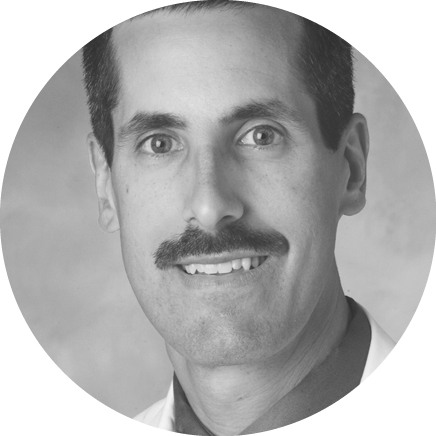
Clara C. Chan, MD, FRCSC, FACS
The femtosecond laser has revolutionized cataract surgery in its ability to perform OCT-guided precise corneal incisions, arcuate keratotomies, capsulotomy, and lens fragmentation. Even just a few years ago, it would have sounded ridiculous to think that a moderately dense nuclear sclerotic cataract could be removed with no phaco energy. While femtosecond laser cataract surgery has been marketed to be ideal for the refractive cataract patient, the benefits are also apparent for high-risk patients with pseudoexfoliation, denser cataracts, Fuchs dystrophy, and shallow anterior chambers. It is a good thing that millennial ophthalmologists are accustomed to technology in their personal lives that is constantly changing, with new smartphones and computer models introduced every year. The femtosecond laser will continue to alter practice patterns, OR flow, IOL technologies, and future generations of phaco machines.
Our more experienced ophthalmology colleagues have seen the transition from intracapsular to extracapsular cataract surgery and then to phacoemulsification cataract surgery. We are not yet at the tipping point, but there may be a day soon when the majority of cataract surgeries being performed will involve the femtosecond laser. Millennial ophthalmologists will need to retain a solid foundation of excellent standard phacoemulsification skills to optimize their skills as a femtosecond laser cataract surgeon. Certainly, patients can appreciate the precision that a laser can offer, but they are still placing their trust in the hands of their surgeon who is operating the equipment.
Clara C. Chan, MD, FRCSC, FACS, is the Chair of the Resident Surgical Teaching Committee, Department of Ophthalmology and Vision Sciences, University of Toronto. Dr. Chan may be reached at clara.chan@gmail.com.

Alpa Patel, MD
As one of the few ophthalmologists fortunate to regularly use both the LenSx (Alcon) and the Catalys (Abbott Medical Optics) femtosecond laser platforms, I can confidently say that the technology is exciting! Millennial surgeons today are practicing in a period of rapid advancements such as femtosecond laser-assisted cataract surgery, which requires a unique surgical skillset. Femtosecond laser technology allows surgeons to offer greater surgical precision, efficiency, and reproducibility to their patients. Although it may add a little bit of time to the overall procedure, this becomes minimal as the surgery center adapts and develops a flow.
Many worry about the loss of the doctor-patient relationship these days. However, I believe that the opportunity to offer patients femtosecond laser treatments actually strengthens this relationship, much in the same way as advanced-technology IOLs. Patients, with the recommendation of their surgeon, are able to choose what they feel is best for them and their vision goals. This decision will be based on many factors, which necessitates discussion between the surgeon, patient, and family/caregivers. In addition to eligibility requirements, lifestyle considerations such as activities, future plans, and daily needs must be carefully examined. I have noticed that patients find it empowering to be involved in the decision-making process. The physician will learn a lot about their patients’ lives, which is critical in relationship building and effective medical decision making.
In summary, I believe that femtosecond laser cataract surgery is another important tool in the millennial ophthalmologists’ armamentarium. This skillset will place the group apart from the pack. The ability to offer patients this option will be empowering for all involved. Patients appreciate up-to-date surgeons who can provide them with choices and support them throughout the decision-making process. For the ophthalmologist, there is a real satisfaction in knowing you can offer your patients an opportunity to fulfill their individualized needs. These are very exciting times.
Alpa Patel, MD, is an Assistant Clinical Professor at Jules Stein Eye Institute/UCLA. She practices at the Eye Institute of Marina Del Rey in California. Dr. Patel may be reached at aspmax2003@yahoo.com.

Inder Paul Singh, MD
With any new technology, it is sometimes difficult to determine its true value, especially when there is significant cost to both the provider and the patient. As an early adopter of femtosecond laser-assisted cataract surgery, I had several initial questions and concerns in mind. Is this worth it? I’m a good cataract surgeon; I don’t think I need the help of a laser to do my arcuate incisions or my capsulotomies, let alone my corneal incisions? I have great outcomes without using the laser; I don’t want to feel like I have to sell something to my patients.
After performing more than 100 cases within a few months, I started to realize that, as with most advances in technology, the advantages of femtosecond laser-assisted cataract surgery are seen in different ways for each patient. As with other advances, ie, going from a larger 2.75-mm to a sub–2-mm incision or adding pressurized infusion to a standard phaco case, these advances don’t necessarily help every patient, but there are scenarios in which they help provide a safer and more efficient surgery. The same principle applies to femto. It’s not that every patient will benefit or have a better outcome because of the laser, but there are patients whom it no doubt has helped.
For example, I had a patient who wanted an accommodating lens but had 2.50 D of astigmatism OD and 3.00 D OS. The Bausch + Lomb Trulign lens did not come in the power he needed. Therefore, I told him we would place a Crystalens (Bausch + Lomb) in his eyes and use the Victus (Bausch + Lomb) to perform arcuate incisions. I informed him that I was not certain how much of his astigmatism I could correct or of the long-term stability. I also informed him he would likely need a refractive procedure postoperatively because I didn’t think I could reliably remove that much cylinder. It’s been over 4 months, and he is 20/20 OD and 20/25 OS, with no cylinder OD and only 0.50 D residual cylinder OS (3.00 D preoperatively). I have performed a number of manual LRIs, but I have not had very good success with cylinder powers that high.
I have many patients in whom the perfectly positioned and sized capsulotomy has helped, such as in a number of pseudoexfoliative eyes and those with post-traumatic or white cataracts. I also perform the femtosecond laser-assisted capsulotomy in my premium lenses and believe that, in certain cases, it helps give me the best chance for ideal lens positioning. Incisions were also surprisingly easy to open and appeared very clean and sealed nicely. In fact, I noticed that when hydrating the wound at the end of the case, it was easier to find the edge of the wound because the laser created a clean square edge that the cannula could identify. I ended up using less BSS to close the wounds.
In terms of conversion, I was honestly shocked as to how positive the response has been from our patient population and the hospital system. Approximately 50% of my total cataract cases are done with the use of the femtosecond laser. I practice in a blue-collar community where the economy has been hit hard, and I do not market externally; I rely on patient word of mouth and internal education. I hear from colleagues that they don’t want to have to “sell” technology to their patients. I agree—we are providers, not salesmen. However, I don’t feel like I am selling because I believe in the technology. Our job, as providers, is to educate patients so that they have enough knowledge to make an informed decision. They need to understand the value of the laser to decide, on their own, if it’s worth spending the money. All we can do is explain what the laser can do and what the advantages might be. We never promote or promise “better outcomes” from the use of the laser. This theory is the same for premium lenses or refractive surgery. If you believe in the technology, educating patients of its benefits is not selling. I often tell patients that if it weren’t for the cost, I would use the laser on everyone who qualifies.
In short, there are advantages of this technology that are not always apparent in every case or every patient. The way I see it, femtosecond laser-assisted surgery gives us tools, like a workstation, to help us more predictably and reliably achieve the outcomes we desire, and I see this workstation concept becoming more integrated with our cataract phaco setup and eventually both technologies being housed in one unit. I think this technology will become the standard of care for cataract removal and that we will see additional uses and indications, whether for more surface work or even other intraocular procedures.
At this time, whether a patient benefits from a clean precise arcuate incision; a perfectly made square-edged incision; a perfectly round, centered, and sized capsulotomy; or less phaco energy due to laser fragmentation, there are a number of ways laser-assisted cataract surgery can help a patient depending on his or her individual situation. It doesn’t mean every patient who undergoes the laser treatment will have a better outcome, but in my practice, it gives me the greatest chance to achieve that superior outcome.
Inder Paul Singh, MD, is in practice at The Eye Centers of Racine & Kenosha in Racine, Wisconsin. Dr. Singh may be reached at ipsingh@amazingeye.com.

Mark F. Pyfer, MD
The past is a prologue to the present.
In my opinion, femtosecond laser technology will transform cataract surgery over the next 10 years, similar to the way phacoemulsification did in the 1980s. Although I was not practicing ophthalmology at the time, it is enlightening to talk to more senior colleagues and read articles from that era in our history. Experienced surgeons were getting good results using manual extracapsular cataract extraction (ECCE) with implantation of rigid PMMA IOLs. They could achieve this at low cost in about 15 minutes. Phacoemulsification surgery had a steep learning curve, required an expensive instrument, and had a higher risk of corneal endothelial damage compared with “standard” ECCE. Also, even though phaco allowed cataract removal through a 3-mm incision, enlargement to 6 to 7 mm for IOL implantation was required. Not until the introduction of foldable IOLs did phaco surgery really take off. As we know today, instrumentation refinements over the years have dramatically improved the safety and shortened the learning curve, so that now phacoemulsification is considered the “standard” in cataract surgery.
Enter the femtosecond laser. Familiar strains of “expensive,” “risky,” and “Why do we need this when we are already getting good results?” can be heard. However, there is no denying the almost poetic beauty of a precise capsulotomy, reproducible corneal incisions, and the ability to aspirate a softened/prefragmented lens with minimal ultrasound energy. As the practice of refractive and cataract surgery merge into one continuum, safe and accurate lens surgery to treat presbyopia will become the norm. Femto laser-assisted surgery will spur development of new IOL designs that take advantage of a precise and likely smaller capsulotomy. Updated aspiration-only handpieces will be introduced that optimize removal of the laser-softened nucleus. Surely now is an exciting time to be a cataract surgeon!
When I heard the inventor of phacoemulsification (who, by the way, was initially rebuked by many of his colleagues), the late Dr. Charles Kelman, shock the audience during a talk 13 years ago by stating that, “In the near future, we will not be performing cataract surgery,” he did not know about femtosecond lasers. He went on to explain his belief that we will remove the lens prior to development of a cataract. The femtosecond laser has brought us closer to Dr. Kelman’s dramatic prediction.
Mark F. Pyfer, MD, is in practice at Northern Ophthalmic Associates in Jenkintown, PA, and on the faculty of Wills Eye Hospital/Thomas Jefferson University in Philadelphia, PA. Dr. Pyfer may be reached at mfpyfer@gmail.com.

Divya Srikumaran, MD
Femtosecond laser-assisted cataract surgery presents exciting new opportunities and challenges for millennial ophthalmologists. On the one hand, as a new technology, it provides something new to offer patients who are interested in the latest and greatest, and it can serve as a way for surgeons to distinguish their practices from other groups. For enterprising ophthalmologists, femtosecond laser-assisted cataract surgery can be a way to maintain business productivity and revenue streams during uncertain changes in the health care system and declining reimbursements. It may also help increase safety for new surgeons in training as they begin to learn to perform cataract surgery, although this still needs to be investigated. For young faculty trying to develop research niches, there are a lot of potential research questions to be answered.
On the other hand, there are still not enough data, in my opinion, that femtosecond laser-assisted cataract surgery improves outcomes. Therefore, many practices and surgeons have to think carefully about whether they want to jump on board and, if so, when and how. There is a definite upfront cost in time and effort that goes into incorporating the procedure into practice, and it is hard to know if your own practice can really support it financially.
Divya Srikumaran, MD, is an Assistant Professor of Ophthalmology and the Residency Program Director at the Wilmer Eye Institute at Johns Hopkins and the Medical Director of Wilmer’s Odenton location. Dr. Srikumaran may be reached at dsrikum1@jhmi.edu.

Aaron N. Waite, MD
Femtosecond laser-assisted cataract surgery will play a large role in the practice of millennial ophthalmologists now and more so in the future. The use of femtosecond lasers in cataract surgery has grown significantly over the past 2 years in the US. With multiple companies competing for market share, there is competition that will improve both technology and pricing. Most cataract practices with a femtosecond laser incorporate its use into about 30% of cases. Surgeon acceptance along with patient perception of increased value/safety will continue to push the growth of femtosecond laser use. If they aren’t already certified for the use of a femtosecond laser for cataract surgery, most millennial ophthalmologists will likely get certified over the next few years.
Multiple academic centers currently use femtosecond lasers for cataract surgery. With companies being willing to offer complimentary patient interfaces to resident surgeons, the future will likely show many residents coming out of residency already certified on a femtosecond laser. This will continue to grow the number of surgeons trained in femtosecond laser-assisted cataract surgery. Femtosecond technology will not replace manual surgery anytime soon, but it certainly adds improvements to an already-excellent surgical procedure.
Aaron N. Waite, MD, is the Director of the Cornea, Cataract and Refractive Surgery Program and an Associate Professor in the Department of Ophthalmology at the University of Tennessee Health Science Center in Memphis. Dr. Waite may be reached at aaron.waite@gmail.com.


